Chengdu has attracted thousands of travelers from different corners of the world with giant panda - one of the most endearing animals. This took will take you to have a very close contact with pandas and enjoy the leisure life pace of Chengdu. Then, you will make full use of your time to explore holy Lhasa City and Mt. Everest. At last, the tour ends at the border between Tibet and Nepal. You can transfer to Kathmandu directly. (As currently the China-Nepal Zhangmu Border is closed due to construction, traveler have to transfer back to Lhasa to leave Tibet.)
Highlights of this tour:
- Experience the relaxing lifestyle of Chengdu and have a close contact with the adorable giant panda;
- Discover authentic Tibetan culture by visiting the unique Buddhist monasteries and sites, such as Potala Palace, Jokhang Temple, Palcho Monastery, etc.
- Take a memorable adventure to the top of the world - Mount Everest and watch the incredibly amazing sunrise.
Tour Brief Information
- Tour price: from
- Tour code: TD-CL-9
- Tour Type: Private escorted tour with Tibetan tour guide and private vehicle with experienced driver
- Destination: Chengdu / Lhasa / Shigatse / Gyantse / Mount Everest / Gyirong / Kathmandu
- Duration: 9 days and 8 nights
- Departure: Flexible
- Travel Theme:




- Best Time:


- Physical Level
- Tour Pace
- Max Altitude
5,200m
- Itinerary Details
- Price Guide & Booking
- Trip FAQs
- Reviews
- Make an Enquiry
Your tour - at a glance
Day 1~2 Arrival & Chengdu Tour
Day 3~5 Lhasa City Tour
Day 6~8 Lhasa - Gyantse - Shigatse - Everest - Gyirong
Day 9 Gyirong Port - Kathmandu
Itinerary Details - Day by Day
Day 1 Chengdu Arrival
Welcome to the hometown of Giant Panda! Upon arriving at the airport/train station, you will be met by your local tour guide, and then drive to your downtown hotel in Chengdu City. After the hotel check-in, you are free to take a rest or explore around on your own.
Optional Activity: go to enjoy an authentic Sichuan Cuisine dinner at a local restaurant.
-
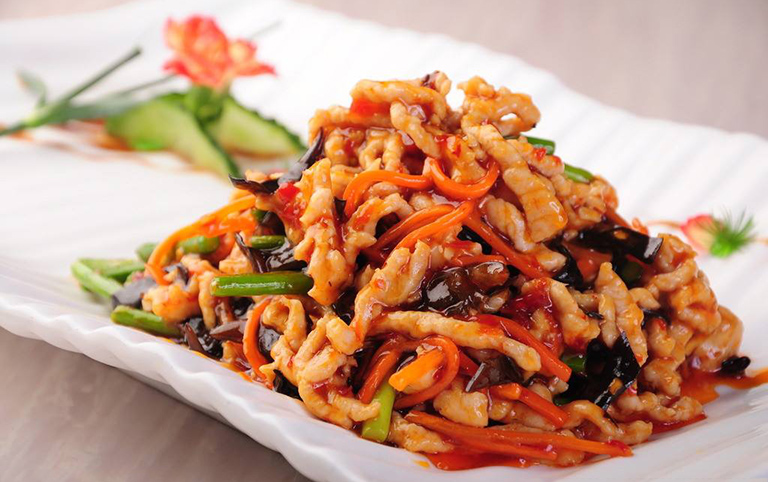 Shredded Pork with Garlic Sauce
Shredded Pork with Garlic Sauce
Day 2 Chengdu ( B, L )
Chengdu has three famous features - Giant Panda, History and Leisure Living Pace. Today, you will go to explore these tree features one by one. First is to visit the lovely Giant Pandas in Chengdu Research Base of Giant Panda Breeding, which is the No. 1 thing to do in Chengdu. You will leave your hotel early and drive about 30 minutes to the panda base so that you can catch up the great moments of pandas, such as feeding, playing, climbing tree, etc. There are different enclosures for pages of different ages, such as all around to see baby pandas, 1 year-old pandas, teenage pandas, and older pandas. Beautiful walking paths will lead you to visit the enclosures from one to next. Enjoy the happy time with pandas.
The second place to visit is the sacred Wenshu Temple which is hidden peacefully among the modern mansions. This temple is the most popular Buddhist temple in Chengdu region. It has beautiful traditional ancient architecture. The atmosphere is calm and quiet, some people are praying. There is a little garden and the monastery is very colorful and decorated.
Lastly, you are going to explore the leisure living peace of locals at Renmin Park and Jinli Street. Renmin Park, or People’s Park is the place for locals to go for a relaxing walk, meet friends, or have a cup of tea. While Jinli is the “street of tourists”. You can wander on the traditional old street to absorb the special atmosphere of Chengdu, taste local snacks, watching a performance, etc.
Optional Recommended Night Activity: watch an fascinating show of traditional Sichuan Opera & Face Changing Performance in a local theatre.
-
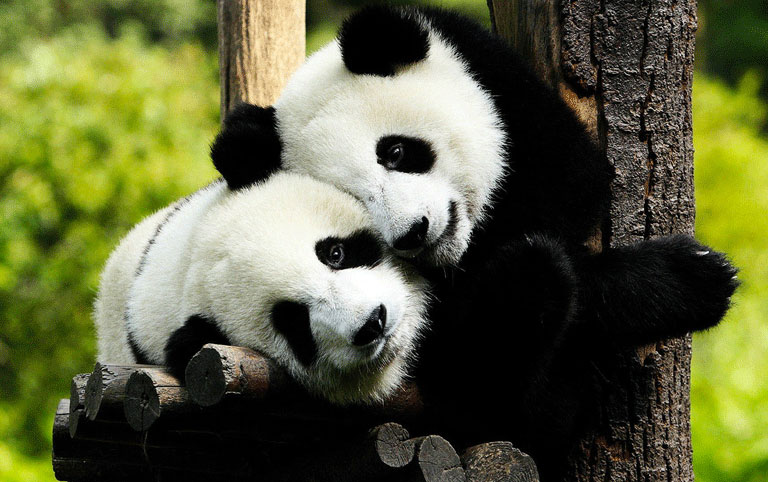 View the lovely giant pandas
View the lovely giant pandas
-
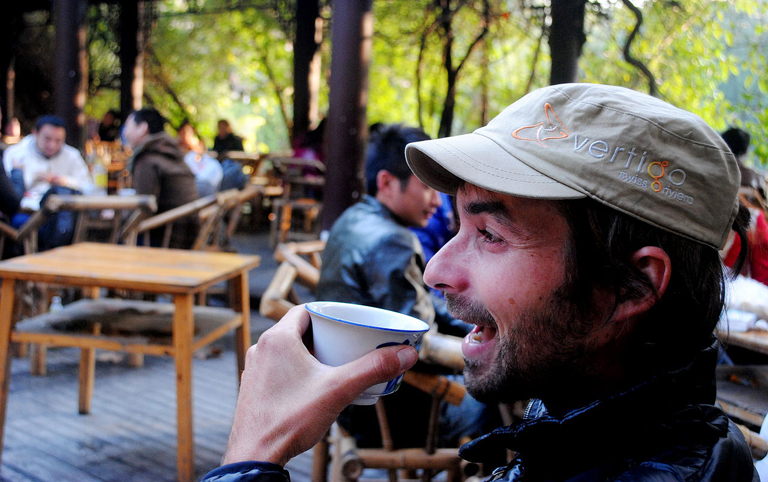 Drink a cup of tea in Renmin Park
Drink a cup of tea in Renmin Park
-
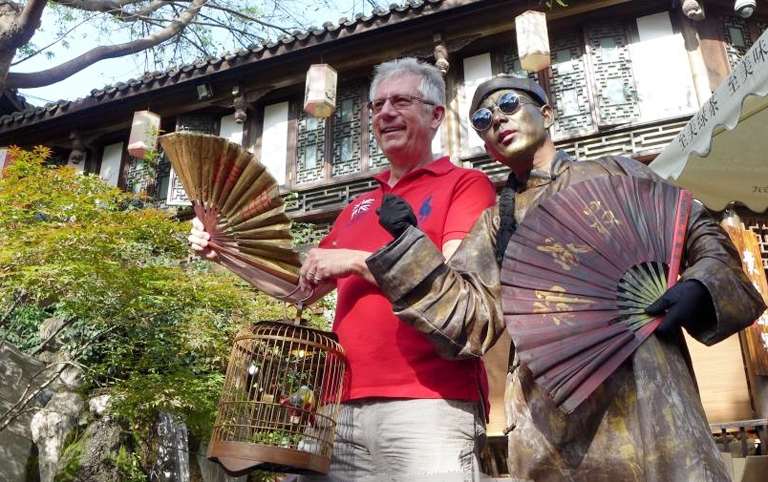 Take a photo with the "Bronze Man'
Take a photo with the "Bronze Man'
Day 3 Flight to Lhasa from Chengdu ( B )
Today, you will be free until your local guide escorts you to the airport for your flight to Lhasa (about 2 hours’ flight). Upon arriving at Lhasa Gongga Airport, you will be picked up by local tour guide at the airport hall, then be escorted to your hotel in Lhasa city in a private vehicle. The rest of the day is free for you to explore the local areas and acclimatize yourself to the air, temperature and high altitude of Lhasa.
High Altitude Acclimation Tips:1) go for some leisure walking to acclimate the high altitude but avoid strenuous activity after arrival; 2) you'd better not have bath, in case of catching a cold; 3) drink more water, and have some fruit; 4) have a good rest.
Day 4 Lhasa ( B )
Start today’s Lhasa exploration with an exciting visit to the landmark - Potala Palace which is regarded as one of the most beautiful architectural building in the world. You will climb up the palace along the zigzag stone paths with white-and-red walls to the top of the palace where you can not only appreciate the exotic Tibetan-style architecture, but also get a great view of Lhasa’s urban areas, then walk into the inner space of Potala Palace to explore the stately chapels and learn about the history of the palace.
Continuing your exploration, you will then get to Jokhang Temple which is considered as the spiritual heart of Tibetan Buddhism. Each day, there are thousands of pilgrims coming from different places in Tibet to the temple to worship to the Buddha. This temple is also known as the “house of Buddha” because it keeps the precious Jowo Rinpoche, the life-sized (5 foot/1.5m) image of the Shakyamuni at the age of 12. The last site for today’s exploration is the famous Barkor Street. It is a circular and wide street encircling the Jokhang Temple. The local people like to walk on the street for several circles usually in the late afternoon as a daily tradition of pilgrimage. The street also has many shops selling a wide variety of traditional Tibetan goods, religious items and handcrafts.
Tips of today: 1) there are 1,080 steps up to climb to the top of Potala Palace, so don’t walk in a rush, which may cause high altitude sickness; 2) taking photos is not allowed inside the palace; 3) today you will be mainly outside, please bring some water, a hat, sun cream, and sun glasses with you.
-
 Great view of Potala Palace in the evening
Great view of Potala Palace in the evening
-
 Entrance of Jokhang Temple with Pilgrims Praying
Entrance of Jokhang Temple with Pilgrims Praying
-
 Local House by Barkhor Street
Local House by Barkhor Street
Day 5 Lhasa ( B )
After breakfast, you will firstly go to visit the beautiful Norbulingka which used to be the former summer palace of Dalai Lamas in the ancient time, and now is a public park. It is famous for its Potrang, the private palaces of former Dalai lamas with grandiose Tibetan architecture style. Next, drive several kilometers to the western outskirts of Lhasa to visit Drepung Monastery. Drepung, in Tibetan, means “prosperity”. Since its establishment, Drepung Monastery has always been one of the most important Buddhist monasteries in Tibet. In its heyday, there were more than 10,000 monks lived and studied in the monastery. Throughout its history, many important and famous Tibetan leaders used to study here, especially the Dalai Lamas. So Drepung Monastery is also respectfully known as the “Mother School of Dalai Lamas”.
In the afternoon, you will be taken to another famous monastery in Lhasa - Sera Monastery. It is famous for the spectacular “Buddhism Debating”. As a daily routine, the monks gather in a courtyard, and debate on the Buddhist doctrines with supplemented gestures, which is thought to be helpful to facilitates better comprehension of the Buddhist philosophy to attain higher levels of study. After enjoying the "Buddhism Debating", you will be transferred back to the city. The rest time is your own free time to rest.
The Etiquette of Visiting Monastery: 1) you shouldn’t wear short and uncover shoulders; 2) taking off your sunglasses and hat before entering the chapels; 3) taking photos is usually not allowed inside the chapels.
-
 Debating Monks
Debating Monks
-
 Norbulingka Park is a good summer resort in Lhasa
Norbulingka Park is a good summer resort in Lhasa
-
 Drepung Monastery Roof
Drepung Monastery Roof
Day 6 Lhasa - Gyantse - Shigatse / 360km, About 8hrs' Driving ( B )
Today, you will leave Lhasa and drive about 8 hours to Shigatse, the second largest city in Tibet. It may be a long journey, but there are many things to do along the road. The first site you will reach is the holy Yamdrok Lake (altitude: 4,400m). As the largest fresh lake in the northern of the Himalaya Mountains, it spreads about 675 square meters from south to north, like an eardrop lying in the arms of snow-capped giant mountains. Viewing from a distance, you can see fertile pastures full of yaks and sheep, and some small Tibetan villages along the lakeshore. Keeping driving not so far from Yamdrok Lake, you will see the imposing Karola Glacier (altitude: 5,045m) towering aloft on the right side of the road.
Continuing your trip, you will get to the historical city of Gyantse. Feel hungry? Have a good lunch in the town, then go to visit the mysterious Palcho Monastery (altitude: 4,040m). The monks and tradition of three important sects of Tibetan Buddhism - Sakyapa, Zhalupa and Gelukpa, peacefully coexist in this monastery. Its Kumbum, which is 35 meters high and has 76 small chapels with hundreds images of Kriyatantras , is believed to be the largest such structure in Tibet.
After the Gyantse sightseeing, keep drive about 3 hours, you will arrive at your hotel in Shigatse (altitude: 3,800m). Have a good rest!
Tips of today: 1) wear warm clothes to prevent from cold and wild; 2) pack some food and drinks with you because you will spend much time on the road.
-
 Yamdrok Tibetan Stone Marks
Yamdrok Tibetan Stone Marks
-
-
 Overview of Palcho Monastery from Dzong
Overview of Palcho Monastery from Dzong
Day 7 Shigatse - Mount Everest / 350km, About 7hrs's Driving ( B )
After breakfast, you will go to visit Tashilhunpo Monastery, the official seat of Panchen Lama who is the second influential leader of Tibetan Buddhism. The interplay between the golden roofs and the white, red and black exterior walls creates a striking composition. Here you will see a giant statue of Future Buddha, the largest one of its kind on earth (26.2 meters high and 11.5 meters wide), decorated with precious pearls, turquoises, corals and ambers.
Then you will leave Shigatse for the exciting adventure to Mount Everest. Enjoy the magnificent plateau landscape along the road. Though being a long driving of about 7 hours, but the views along the road are stupendous. As you reach Gawula Pass (5,250), you’ll feast your eyes on the fantastic view of Himalaya range including 5 famous peaks over 8,000 meters - Mt. Makalu (8,463 m), Mt. Lotse (8,516 m), Mt Everest (8,844 m), Mt. Cho Oyu (8,201m) and Mt. Shishapama (8,020 m). When you finally get to Rongbuk Monastery, and get the first sight of the mighty Everest, you will immerse in a solemn ethereal mood and find all the efforts you have made along the long way are not in vain. Located about 5100 meters above the sea level, Rongbuk Monastery is the highest monastery in the world. It is the best location to take some great photos of the front face of Mount Everest. The rest of today is free for you to visit the Rongbuk Monastery and explore the nearby Everest Base Camp. Take photos with the Everest altitude marker and EBC marker to commemorate your wonderful adventure tour.
Accommodation: if you visit Mount Everest during the off season (November to April), you will accommodate at Rongbuk Guest House near the Rongbuk Monastery; if you visit Mount Everest during the peak season (May to October), you will accommodate in a local Tibetan tent at Everest Base Camp near Rongbuk Monastery which is only run between May and October by local Tibetans. Please note that the accommodation at both places is very simple and basic, only dorm beds with communal squat toilets are available. Duvets, heated blankets and hot water will be provided, and you are suggested to bring your own sleeping bag and toilet paper. There is no running water, sinks or showers. The dining room just offers basic breakfast and dinner without menu. Remember to dress warmly all the time.
Tips of today: bring a warm coat for low temperature in Everest and avoid strenuous activity to prevent from high altitude sickness.
-
 Wonderful View of Mount Everest
Wonderful View of Mount Everest
-
 Mount Everest Flag Clouds
Mount Everest Flag Clouds
-
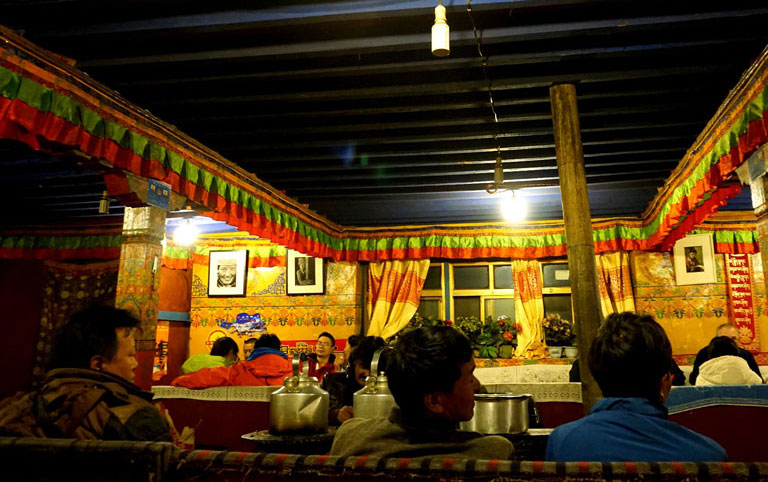 Dining Room in Rongbuk Monastery Guesthouse
Dining Room in Rongbuk Monastery Guesthouse
Day 8 Everest - Gyirong Town / 370km, About 8hrs' Driving
Wake up early to enjoy the marvelous sunrise on the peak of the world from Rongbuk Monastery. The top part of the Mount Everest is always covered by snow all the year round, and when the sun shines on the mountain, the peak is like a giant white pyramid, which is one of the most famous sceneries of Mount Everest. In bright days, you can also see a wisp of cloud hanging above the top of Mount Everest. It flies eastward in the fast western wind just like a flapping flag. This unique phenomenon is the spectacular “Cloud Flag”. The cloud will change from surging waves into a thin cooking smoke or from galloping steeds into the mysterious veil of a goddess.
Till now your Mount Everest adventure is about to end. The rest of today is to drive to Gyirong Town. The views along the road are stupendous. In clear days, you can see the clear face of Shishapangma Peak and enjoy the beautiful view of Pekutso Lake.
Accommodate at Gyirong Town.
Tips of today: 1) the sunrise usually starts around 6:30 am to 7am on Mount Everest; 2) keep warm all the time.
-
 Charming Sunrise on World Highest Mountain
Charming Sunrise on World Highest Mountain
Day 9 Gyirong - Kathmandu / 185km, About 7~8hrs' Driving
Today, drive about 25 km to Gyirong Port at China-Nepal border. Tour ends! The rest of today is free on your own to transfer to Kathmandu or other destinations in Nepal. Kathmandu is only about 160 km from Gyirong Port, but remind the road condition is not as good as Tibet roads. It usually takes more than 6 hours to drive to Kathmandu from Gyirong Port because the road is narrow and bumpy, and buddy in rainy season.
Useful Trip Notes
-
- 1. Tibet Permits Guaranteed
To travel in Tibet, all Non-Chinese passport holders need to have a Tibet Travel Permit which is issued by Tibet Tourism Bureau in Lhasa. And only Chinese travel agencies like Tibet Discovery can apply for the permit on behalf of tourists. You must obtain it before your tour starting because the permit will be checked when you board your flight/train to Tibet. Traveling with Tibet Discovery, you don't have to worry about the complicated procedures of Tibet Travel Permit application. All you have to do is to confirm a tour package with us and send us your passport and Chinese visa copies at least 15~20 days in advance before your tour, then we will take care of all the rest things. Once the permit is issued, we will deliver to your address in China, such as your hotel, local travel agency, etc.
-
- 2. Available Months to Visit Tibet
Generally speaking, April to October is the best time. July and August are the peak season and rainy season. It is usually snowy and cold in winter, which is not suitable for visit Mount Everest, Namtso and Mount Kailash regions. While other places such as Lhasa, Gyantse and Shigatse are suitable for travel all year around. The temperatures in daytime and night differs a lot, usually 5~15℃ in the daytime and -5~0℃ in the night, so please wear accordingly.
-
- 3. High Altitude Sickness
The average altitude of Tibet is about 4000 meters above the sea level (Lhasa: 3700m; EBC: 5200m; Namtso: 4718m). You may suffer a bit from High Altitude Sickness in the beginning days of your Tibet trip if you haven’t had rich high plateau travel experience. But don’t worry too much, the high altitude can be acclimatized usually in 2~3 days. Our suggestion is to take a physical examination and get suggestions from your doctor, and also bring some medicines to prevent from High Altitude Sickness before your trip. While in Tibet, you should keep warm all the time, avoid strenuous activities, drink more water and eat more vegetables and carbohydrates. You’d better not take showers during the first two days after your arrival in Tibet. If you don’t feel well, get help from your tour guide or go to the hospital without any delay.
-
- 4. How to Go to Tibet
Basically you have two options – flight and train. Currently, you can take a flight to Lhasa from Beijing(4.5hrs), Xian(3.7hrs), Chengdu(2.5hrs), Chongqing(3hrs), Kunming(3hrs), Kathmandu (1.5hrs), etc. Among all these cities, Chengdu and Xian have more frequent flights to Lhasa.
If you prefer a train travel, you can take a train to Tibet from Beijing(40.5hrs), Xian(32hrs), Chengdu(43hrs), Shanghai(47hrs), Chongqing(42hrs), Lanzhou(25hrs), Xining(22hrs), Guangzhou(54hrs). -
- 5. Packing and Wearing Ideas
Firstly you can’t forget your passport and Chinese Visa. A large backpack and a smaller one are recommended (the smaller one can be used for daily activities). Also bring necessary medicine you need. Other stuffs like sunglasses, snow glasses, hats, lip balm, sun block are recommended.
As for wearing, you are suggested to dress in layers (both thin and thick jackets). Down jacket is necessary in Spring and Autumn. A pair of durable and comfortable shoes is necessary.
Recommended Tibet Group Tour Packages
Escorted by a skilled driver and companied by a professional local tour guide to organize all the activities, all you have to do is to enjoy your fantastic Tibet journey.Following are some other recommended Tibet group tour packages that you may be interested in. You can also contact us to customize a trip if you want..
-

Lhasa
4 Days Lhasa City Private Tour - Heart of Tibet
Highlights: Potala Palace, Barkhor Street, Sera Monastery
-

Beijing / Lhasa
8 Days to See the Harsh Contrasts of Beijing and Tibet
Highlights: Forbidden City, Great Wall, Potala Palace, Barkhor Street
-

Shanghai / Lhasa
8 Days Lifetime Tibet Train Tour from Shanghai
Highlights: Yu Garden, Qinghai Tibet Railway, Potala Palace, Jokhang Temple
-
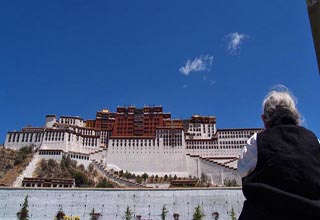
Chengdu / Lhasa
4 Days Best of Tibet Tour from Chengdu
Highlights: Highlights:Potala Palace, Jokhang Temple, Sera Monastery




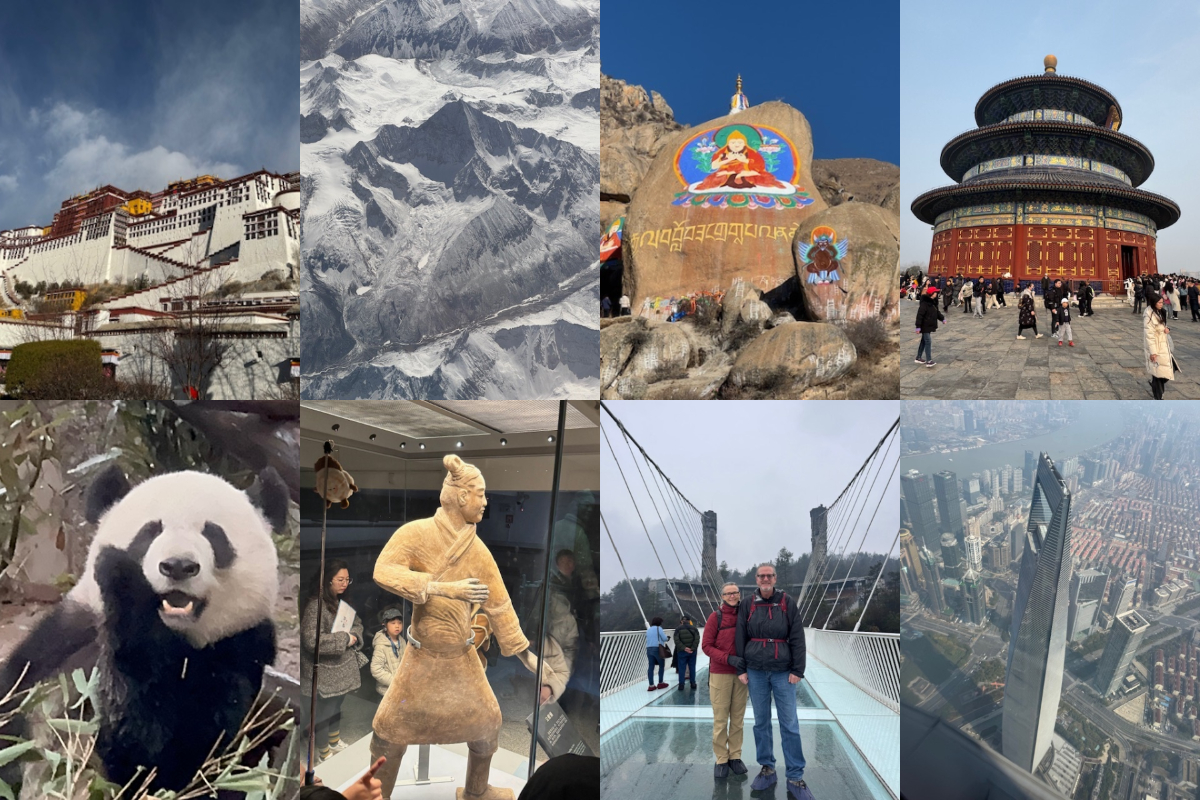






 Karen
Karen Wonder
Wonder Jack
Jack Rita
Rita Johnson
Johnson Vivien
Vivien Wing
Wing Ariel
Ariel Leo
Leo Tracy
Tracy Evelyn
Evelyn April
April Phoebe
Phoebe Kelly
Kelly Shirley
Shirley Reya
Reya Juliet
Juliet Elk
Elk Felix
Felix Sean
Sean